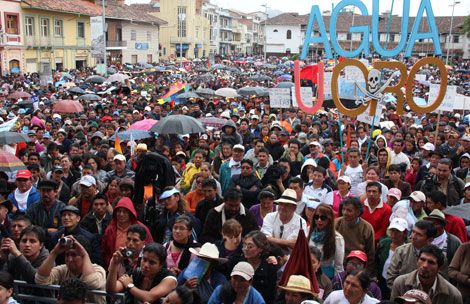Above: Young girl putting UN dignitaries in their place at UN meeting about the environment in Brasil.
Below: A short fusion between Weiner’s Pulitzer-prize winning account of the Grants’ fundamental research in evolutionary biology, The Beak of the Finch, and Freire’s seminal contribution to critical pedagogy, Pedagogy of the Oppressed.
We are living through the sixth mass extinction. The first to be driven by the expansion of a single species. The first that this species is conscious of its effect on its surroundings. Evolution is accelerated as conditions change. Like all organisms, humans must find new niches that are favored by the new conditions in order to survive. Unfortunately, we are often not allowing our population to explore the diversity of currently empty niches because a minority of humans is imposing their will over other humans, making them “less human”. Such dehumanization is often recognized with the socially, economically, and culturally marginalized worldwide. I want to explore the missed evolutionary opportunity for our species when we dehumanize younger generations. Their particular situation this planet in crisis: as relatively new arrivals to Earth, as subject to the decisions of older generations, as the largest portion of global population, etc. has carved out a clear niche for them in the evolution of our species and our planet.
The evolutionary niche of the younger generations is to liberate themselves and older generations from environmental disaster. The unsustainable lifestyle and actions of living generations lead to environmental degradation. Environmental degradation is a legitimate form of oppression towards future generations – the fact that the living generations are taking more than their fair share as a generation result in future generations being left with diminished lifestyles – Just like the socially, economically, culturally oppressed that share this Earth with their contemporaries, this oppression cannot be overcome by the oppressors. In other words, the oppressed cannot be liberated; only they can liberate themselves AND their oppressors. This can only be accomplished through dialogue, critical analysis, and action. However, as oppressors, how do we engage in dialogue with those who do not exist yet (future generations – the most oppressed)?
Younger generations are the most affected by this oppression from the past few generations (especially those since the industrial revolution up to those currently living) and have the least amount of time participating as oppressors themselves. Responsibility falls upon them to speak for their generation and of those coming after them, as they are the ones who can most legitimately claim “oppressed” status.
Current trends show accelerating global resource depletion and increasing exposure to harmful environmental conditions caused by pollution and natural disasters. We have imposed upon future generations, through our unsustainable lifestyles, the most unfair distribution of resources and exposure to environmental hazards – they will bear the brunt of our actions the most while reaping the least benefit from our resource depletion and polluting of Earth. Yet the fact they are young does not make them any less human, and so should not mean that they are any less entitled to those resources than an adult. After all, everyone was young, and its only a matter of time before the young become old.
In this case, everyone is simultaneously oppressor and oppressed, some people (the majority) are just more oppressed than others (the minority). After all, you will not lead as full of a life, environmentally speaking, as your predecessors did (they ate fruits you will never taste, breathed air more pure than that you will ever breathe, saw animals you will never see, ) and likewise, your progeny’s welfare will be diminished even further than your own (you eat fruits they will never taste…etc)
As intergenerational OPPRESSORS, what can we do? We need to trust young people are able to reason in order to engage in an honest conversation with them as equals. Meanwhile, we must abandon unsustainable lifestyles: intentions don’t matter if we do not translate them into actions. To ask for the abdication of an oppressive, unsustainable lifestyle, while not living like those oppressed is a farce. “Think seven generations ahead”, famously said the Iriquois. What would it mean to be sympathetic with people a couple hundred years into the future? How would you live if you were to live like they will have to live?
As intergenerationally OPPRESSED, what can we do? We must break the cycle of oppression by no longer defining ourselves in contrast with those who oppressed us. i.e. we must not yearn to have as much material possessions as those who came before us, use as much resources as those who came before us, lead the lifestyle of those who came before us. We must not become oppressors ourselves, and thus perpetuate the oppressor-oppressed dependency cycle. We must create a new identity for ourselves, go a new direction that does not involve gauging ourselves as humans based on the measuring stick of past generations (often wealth and power). Fulfill our humanity in a new way, find a new meaning in life.
What if this denouncement of intergenerational injustice, voiced by the younger generations themselves, goes through the proper legal means to influence policy/regulation? What if engaging young generations in the exercise of critical reflection and action to change their condition as “environmentally oppressed” by past generations becomes the praxis of educators (in this case, the revolutionary leadership)? What if, in their search for a new way of life which does not emulate that of its predecessor’s, the young generations free themselves, and older generations from environmental collapse? What if this niche is so fitting in the face of current environmental degradation that it is able to drive the evolution of our species, through our economies and societies, and the planet into a sustainable, non-oppressive direction?















